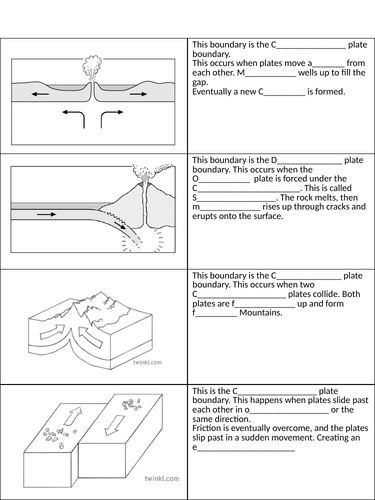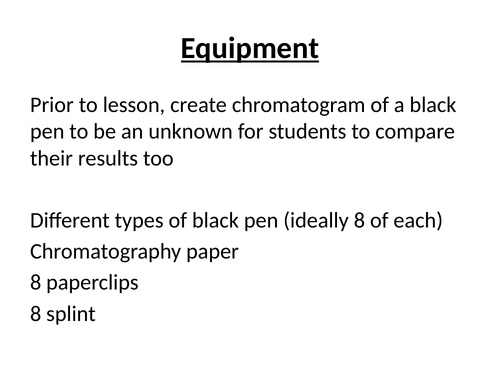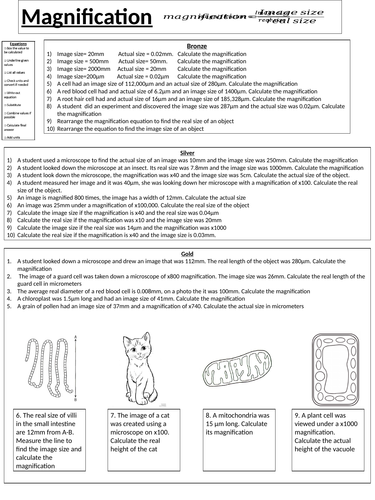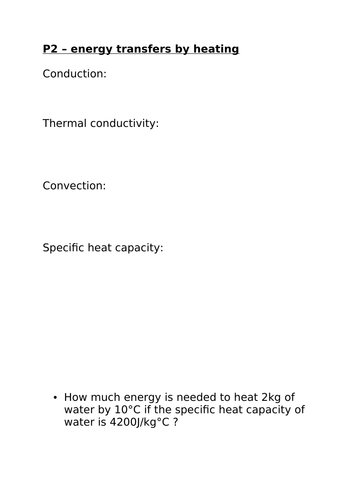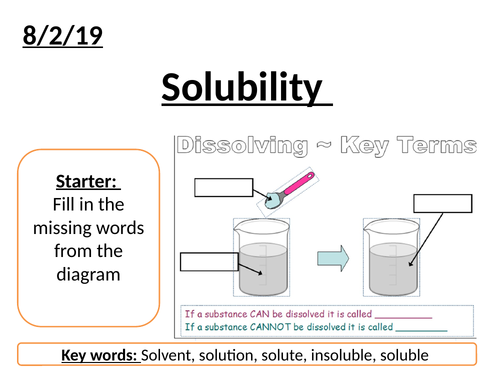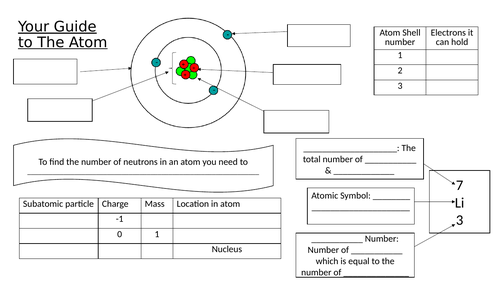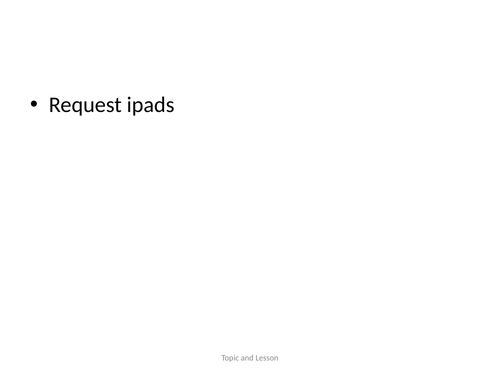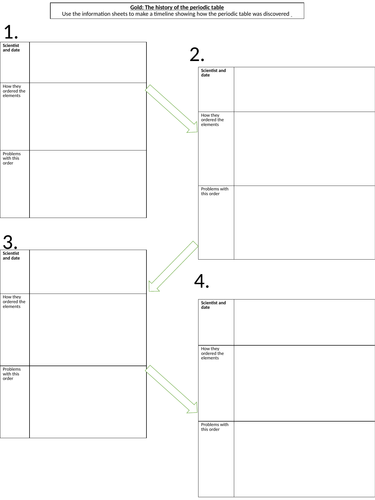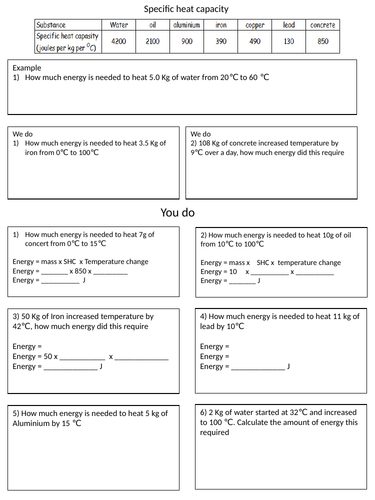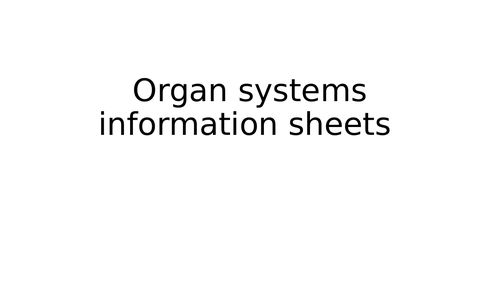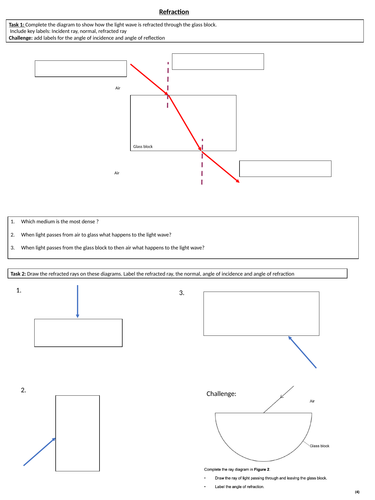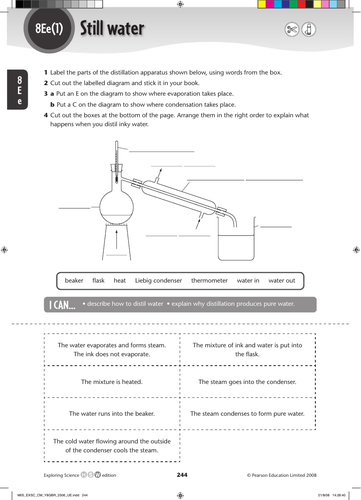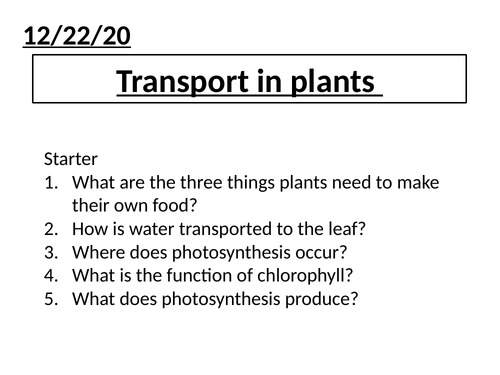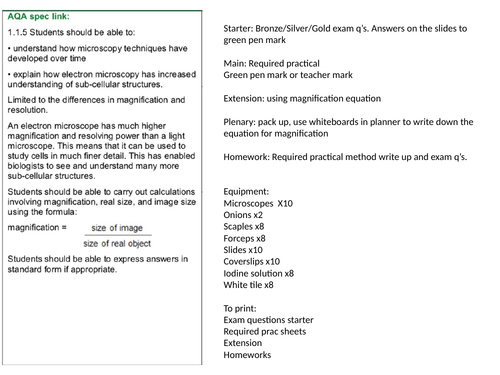
124Uploads
33k+Views
8k+Downloads
All resources

Plate boundaries - differentiated tasks
Low ability - fill in the gaps activity with the first letter of each missing word
Middle ability - fill in the gaps
High ability - explain themselves

Chromatography KS3
Aimed at a mixed ability year 8 class
Starter: summaries what separation techniques students have learnt about so far
Main: Define and explain chromatography
Show students a chromatogram and discuss what we can learn from it
Practical: carry out an investigation to see who wrote the note, work sheet to complete whilst chromatogram is developing
Extension: What effect does each mistake make
Plenary: Exam question

Magnification
Starter: Retrieval starter, based on prior knowledge about animal and plant cells
Main:
explaination of how to convert between common units used in biology
Differentiated task to convert between units
-explaination of how to use standard form
questions to practice on standard form
microscope questions to explain examples
differentiated magnfication worksheet
Plenary:
plenary grid with questions from this lesson and based on animal and plant cells. to be done individually or as a group

Magnification equation worksheet
Differentiated practice using the magnfication equation.
Bronze: very simple, simple put the numbers into the equation
silver: need for rearranging equation
gold: need for rearranging equation and converting between units, and measuring image size from image

P2 energy transfer by heating
P2 - energy transfer by heating
Revision powerpoint for the topic, with a booklet for students to work through
P2 following the kerboodle specification

Dissolving KS3
Aimed at mixed ability year 8 class
Starter: Add key terms to diagram, using key words for the lesson
Main: Define key words and explain solubility
Practical: see if different compounds are soluble or not
Then draw particle pictures of what happens when a substance is dissolving
Plenary: Tweet one thing students learnt today

C1.6 structure of the atom
aimed at a mixed ability year 9 class
Starter Activity
Put atom structures in the correct order thinking back to last lesson
Main –
Work through work sheet in steps. To ensure maximum understanding
Chase the element – race task to find out what each element around the room is, identifying proton neutron and electron number and matching it with an element on the periodic table
Make a model of an atom using string, and card (cut card into circles use string to attach them together)
Plenary
Tweet what you’ve learnt tday

Fractional distillation KS3
Aimed at a mixed ability year 8 class
Starter: work out the link between the pictures
Main: Explain what crude oil is and what fractional distillation is
Watch video, answer questions, green pen mark questions
Complete level 1/2/3 worksheets explaining fractional distillation
Extension: research task linking SMSC and crude oil
Plenary: What problems would we encounter if we banned all crude oil now

History of the periodic table KS3
Differentiated retrieval starter questions.
Go through answers
Main –
Add periodic table to key words, watch video about history of periodic table
Using differentiated sheets, create timeline of history of the periodic table
Label modern periodic table and answer questions
Plenary
Carton elements – identify the carton character

Simple Distillation KS3
Aimed at mixed ability year 8 class
Starter: would you drink dirty water, how do you think you could clean it?
Main: SMSC link to how many people dont have clean water, fill in SMSC grid based on video
Explain simple distillaation and equiptment, label diagram of equiptment
Watch distillation demo
Bronze/ Gold task to explain distillation
Extension task available on powerpoint
Plenary: Exam question

C3.3 Ionic bonding - foundation
Aimed at a lower ability class
Starter Activity
Ions recap, what charge do elements have in different groups
Stretch question to think about how group 1 and 2 will interact with group 6 and 7
Main –
Go through the video and answer the questions, go through answers
Practice drawing ionic compounds Extension: explain the difference between KBr and K2O
Go through the answers which are on the slides
Exam question practice to move onto if have a chance
Plenary
4 mark exam question – peer assess
Good to show the detail they need in their answers

C11.1 History of our atmosphere
Aimed at foundation students. targets of level 4
Information about how the earths atmosphere was created, then a story board for students to fill in using questions from the version on the board.
Extension questions included to challenge students
extension sheet if students finish.
6 mark question on this topic for students to practice exam technique as a plenary

Eukaryotic and Prokaryotic cells
Combining both B1.2 and B1.3 from the kerboodle topic
Starter: No goal starter, images of plant and animal cell and a microscope. students can add any information they already know. Images can be printed or a list of what they know can be wrote. To be referred to at the end of the topic, assess prior knowledge
Main:
Label plant and animal cell, differentiated version available, animated answers embedded in the powerpoint
Match structure and function of organelles
Show students bacterial cell, students draw and label their own, before filling in the comparison tick box to compare animal, plant and bacteria cells. Stretch task available
Explain key words prokaryotic and eukaryotic, then students complete the assessed questions showing understanding of differences between these cells. Self assess answer using mark scheme
Plenary
Plenary grid, can be done individually or as teams. Covers key concepts from the lesson, answers on the following slide

Transport in plants KS3
Objectives:
Describe how water is transported in plants
Explain how gases enter and leave plants
explain how some plants are adapted to limit water loss
Potential practical activity of celery with food colouring, not essential for the lesson however.
Starter: Recall questions, answers on the following slide
Main - potential celery practical
discuss the role of the root hair cells, recap students prior knowledge on this
Discuss how water enters a plant, answer questions. Answers on next page
Discuss how gases get in and out of a plant
Discuss adaptations plants have in warm temperatures
Plenary - Exam questions, answers included

Filtering and evaporation KS3
Aimed at mixed ability year 8 - Some resources from TES
L1 - Starter: thinking about what sea water contains
Main: Think pair, share how to separate sea water
introduce key words
write a method/risk assessment for practical
Plenary: particle diagram of what happens during filtering
L2 - Main label equiptment in the diagrams and mark
Main: complete rock salt practical
Differntiated bronze/gold worksheets for students to work their way through
Plenary: one thing students learnt today
Marking sticker provided for the practical, if you wish to level the students work

Microscopes required practical
Aimed at a mixed ability year 9 class
Starter: Differentiated exam questions answers on the powerpoint to mark
Main: Required practical, worksheet to complete alongside. Answers on the powerpoint to self assess after
Extension: magnification exam questions to practice , answers on the powerpoint
Plenary: Pack up, write equation from memory
Homework sheet: Exam questions on magnification and method to write for the practical

